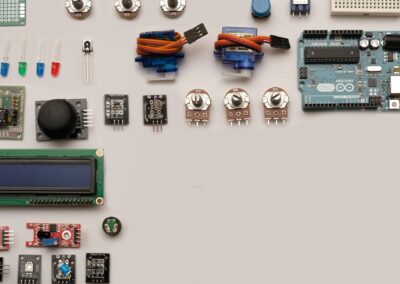Best Practices for Securing Automated Device Configuration Processes
Understanding the Importance of Secure Automated Device Configuration
Ensuring the security of automated device configuration is paramount in today’s interconnected world, especially in regions like Saudi Arabia and the UAE where the adoption of advanced technologies is accelerating. Automated device configuration simplifies the deployment and management of IoT devices, but it also introduces potential security vulnerabilities. If not properly secured, automated processes can become entry points for cyber-attacks, leading to data breaches and system compromises. This article explores best practices for securing automated device configuration, providing actionable insights for business executives, mid-level managers, and entrepreneurs striving to protect their IoT infrastructure in dynamic markets such as Riyadh and Dubai.
Implementing Strong Authentication and Authorization Mechanisms
One of the foundational best practices for securing automated device configuration is the implementation of strong authentication and authorization mechanisms. Ensuring that only authorized personnel and systems can access configuration processes is critical. Multi-factor authentication (MFA) provides an additional layer of security by requiring multiple forms of verification before granting access. In high-tech regions like the UAE and Saudi Arabia, businesses are increasingly adopting MFA to protect sensitive IoT configurations. Additionally, role-based access control (RBAC) should be implemented to ensure that users have only the necessary permissions to perform their tasks, minimizing the risk of unauthorized changes to device configurations.
Encrypting Communication Channels
Another vital practice is encrypting communication channels between devices and configuration management systems. Encryption protects data in transit, ensuring that sensitive configuration information cannot be intercepted or tampered with by malicious actors. Using protocols such as Transport Layer Security (TLS) can secure communication channels, providing robust encryption and integrity checks. For organizations in Riyadh and Dubai, where the digital infrastructure is highly developed, adopting strong encryption practices is essential to maintaining the security of automated device configuration processes. This approach not only protects against eavesdropping but also helps to ensure the authenticity of configuration commands.
Regularly Updating and Patching Systems
Keeping software and firmware up to date is a crucial aspect of securing automated device configurations. Vulnerabilities in outdated software can be exploited by attackers to gain unauthorized access to configuration processes. Regularly applying patches and updates helps to mitigate these risks by addressing known security flaws. In the fast-evolving technological landscapes of Saudi Arabia and the UAE, where businesses are continually adopting new technologies, maintaining up-to-date systems is imperative. Automated patch management solutions can streamline this process, ensuring that all devices receive necessary updates without manual intervention, thereby reducing the window of vulnerability.
Implementing Comprehensive Logging and Monitoring
Comprehensive logging and monitoring are essential for detecting and responding to security incidents related to automated device configurations. By maintaining detailed logs of all configuration activities, businesses can track changes, identify anomalies, and investigate potential security breaches. In regions like Riyadh and Dubai, where regulatory compliance is stringent, having robust logging mechanisms can also aid in meeting legal and industry standards. Integrating monitoring tools that provide real-time alerts and analytics further enhances security by enabling prompt detection and response to suspicious activities, thereby mitigating potential threats before they can cause significant harm.
Conducting Regular Security Audits and Assessments
Regular security audits and assessments are necessary to evaluate the effectiveness of the security measures implemented for automated device configurations. These audits help identify vulnerabilities, assess compliance with security policies, and ensure that best practices are being followed. For businesses in the UAE and Saudi Arabia, conducting periodic security assessments is crucial for maintaining a strong security posture. Engaging third-party security experts to perform these audits can provide an unbiased evaluation and valuable recommendations for enhancing security. By continuously assessing and improving security practices, organizations can better protect their IoT deployments from evolving threats.
Conclusion: Ensuring Robust Security for Automated Device Configurations
Securing automated device configuration processes is a critical aspect of protecting IoT infrastructure, particularly in technologically advanced regions like Saudi Arabia and the UAE. By implementing strong authentication and authorization mechanisms, encrypting communication channels, regularly updating systems, maintaining comprehensive logging and monitoring, and conducting regular security audits, businesses can significantly enhance the security of their automated device configurations. As IoT technology continues to evolve, adhering to these best practices will help organizations safeguard their operations, ensuring sustained business success and resilience against cyber threats.
—
#AutomatedDeviceSecurity, #IoTConfiguration, #DeviceSecurityBestPractices, #IoTSecurity, #SecureAutomatedProcesses, #SaudiArabiaTech, #UAETech, #RiyadhInnovation, #DubaiTech






























